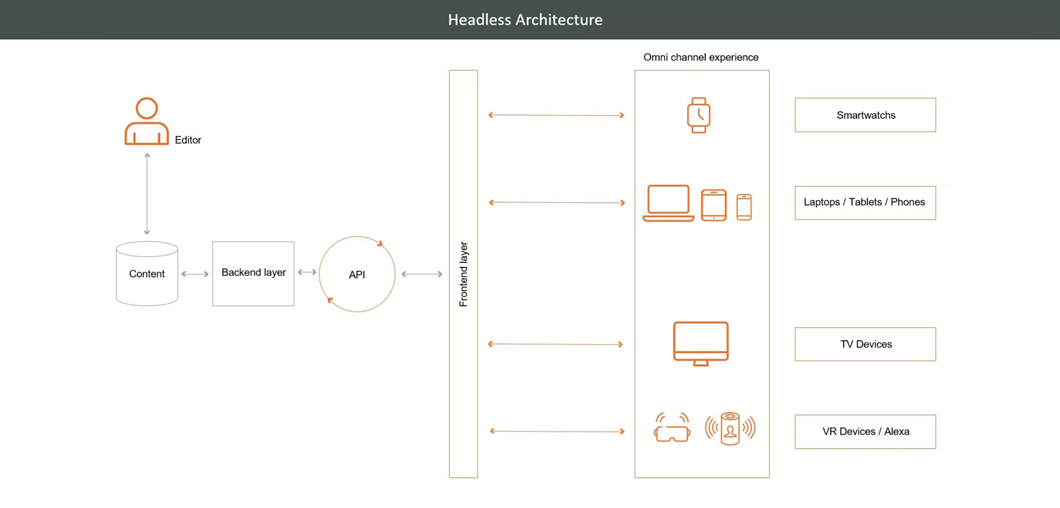What is headless and how does it help you?
If you are used to working in a traditional CMS, you might recognize some of the following challenges: inflexible work processes, plugin bloat, limitations in reuse of content across platforms and devices and, attendant to all of these, problems with loading times.
If any of this sounds familiar, it might be time to consider switching to Headless CMS.
Headless is, simply put, a CMS that disconnects frontend from backend. This means that you can have any number of front ends, across different platforms, without being limited by a tightly held connection between back end and front end. And as time goes by, and new platforms become part of your outreach, you’ll be able to fit them into your setup as well. The same is true for the back end – here, you can update one aspect or section, without disrupting the front end.
In other words, by going headless, you are adopting a tech-agnostic approach, where you can continuously adapt and update according to your needs and the technological innovations that become available, while maintaining day-to-day performance.
As we’ve mentioned, the primary benefit of headless is the fact that it disconnects the back end from the front end. As you can see in the table 'Traditional CMS vs. Headless CMS', this provides a high degree of flexibility, both in terms of how things work now – looking at market conditions and technological direction – and how they might look in the future. In other words, while a traditional CMS ties you to an inflexible set of conditions, going headless allows you to adapt as new platforms and devices become part of your strategy.
To expand on the comparisons, the differences between traditional and headless CMS manifest in terms of flexibility and adaptability – both in terms of you being able to adapt to changing circumstances in the market, but also in terms of being able to adapt the CMS to the needs of your company.
In addition, with a traditional CMS you’ll find yourself shackled to one solution that solves a dozen different things, some very well and others less well. With headless, you will be able to choose a best-in-breed approach and pick the best solution for each of the issues you need to address.
As we have mentioned, the benefits of going headless are not merely there when you initially adopt that approach to CMS. If you decide that your needs have grown in say, 5 years, or new solutions have eclipsed what is currently viewed as the top of the class, you can upgrade your tech without having to do a rehaul of the entire system from top to bottom.



